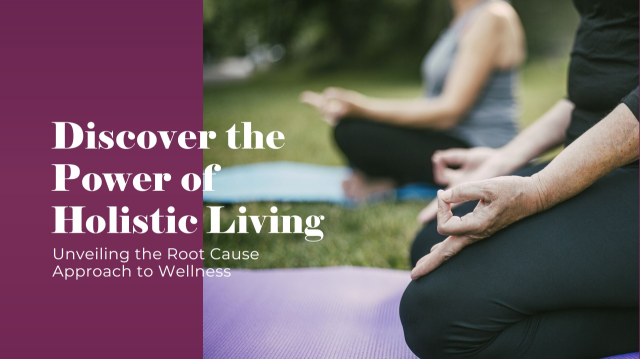In an era where the pace of life is accelerating and the demands on our time are increasing, cultivating a balanced and enriching lifestyle has become more crucial than ever. "Lifestyle" is a term that encompasses the way we live our lives day to day, integrating our habits, routines, and choices into a coherent approach to well-being. This article explores the multifaceted dimensions of lifestyle, offering insights and practical advice on how to create a life that nurtures physical health, mental well-being, and personal fulfillment.
Understanding Lifestyle: Beyond the Basics
1. Defining Lifestyle:
Lifestyle refers to the manner in which individuals or groups live, including the activities, habits, attitudes, and values that shape their daily existence. It's a comprehensive term that covers everything from diet and exercise to social interactions and leisure activities. A well-rounded lifestyle considers not just physical health, but also mental, emotional, and social aspects, promoting an integrated approach to living. check here techvtimes.
2. The Evolution of Lifestyle:
Historically, lifestyle choices were often dictated by necessity rather than preference. However, as societies evolved and personal autonomy increased, people gained the freedom to design their lives according to their values and aspirations. Today, lifestyle choices are influenced by a myriad of factors including cultural trends, technological advancements, and individual goals, leading to a diverse array of lifestyles across different demographics.
Dimensions of a Balanced Lifestyle
A balanced lifestyle encompasses several key dimensions that contribute to overall well-being. These dimensions are interconnected and influence one another, creating a holistic approach to health and happiness.
1. Physical Health:
Physical health is the cornerstone of a balanced lifestyle. It involves maintaining a healthy body through regular exercise, proper nutrition, and adequate rest.
-
Exercise: Engaging in regular physical activity has numerous benefits including improved cardiovascular health, enhanced muscle strength, and better mental health. Incorporating a mix of aerobic exercises, strength training, and flexibility routines can ensure a comprehensive fitness regimen.
-
Nutrition: A balanced diet rich in fruits, vegetables, lean proteins, and whole grains provides essential nutrients and energy. Mindful eating practices, such as paying attention to hunger cues and savoring meals, can enhance the relationship with food.
-
Sleep: Quality sleep is vital for physical recovery and cognitive function. Establishing a consistent sleep routine and creating a conducive sleep environment can improve sleep quality and overall well-being.
2. Mental and Emotional Well-Being:
Mental and emotional well-being involves managing stress, nurturing positive relationships, and cultivating a healthy mindset.
-
Stress Management: Chronic stress can have detrimental effects on health. Techniques such as mindfulness meditation, deep breathing exercises, and regular breaks can help mitigate stress and promote relaxation.
-
Emotional Intelligence: Developing emotional intelligence involves understanding and managing one's emotions, as well as empathizing with others. Building emotional resilience can improve relationships and enhance personal growth.
-
Mental Health: Addressing mental health needs through therapy, counseling, or self-help strategies is crucial. Practices like journaling, engaging in hobbies, and seeking support when needed can contribute to mental well-being.
3. Social Connections:
Human beings are inherently social creatures, and meaningful relationships play a pivotal role in a balanced lifestyle.
-
Building Relationships: Cultivating strong, supportive relationships with family, friends, and community members provides a sense of belonging and emotional support. Engaging in social activities and volunteering can foster a sense of connection.
-
Communication: Effective communication is essential for healthy relationships. Practicing active listening, expressing oneself clearly, and resolving conflicts constructively can strengthen bonds with others.
-
Community Involvement: Participating in community activities and organizations can enhance social ties and provide opportunities for personal growth and fulfillment.
4. Personal Development:
Personal development involves pursuing goals, acquiring new skills, and engaging in activities that align with one's passions and values.
-
Lifelong Learning: Continuously acquiring new knowledge and skills can stimulate intellectual growth and keep the mind active. Reading, taking courses, and exploring new interests can contribute to personal enrichment.
-
Goal Setting: Setting realistic and achievable goals provides direction and motivation. Breaking down larger goals into smaller, manageable steps can make the process more attainable and rewarding.
-
Hobbies and Interests: Engaging in hobbies and creative pursuits offers a sense of joy and accomplishment. Whether it's painting, gardening, or playing a musical instrument, these activities can enhance overall satisfaction.
5. Financial Well-Being:
Financial well-being is a crucial component of a balanced lifestyle, impacting stress levels and future security.
-
Budgeting: Creating a budget helps manage expenses and allocate funds for savings and investments. Tracking spending and identifying areas for improvement can lead to better financial stability.
-
Saving and Investing: Building an emergency fund and investing in long-term financial goals, such as retirement, can provide security and peace of mind.
-
Debt Management: Addressing and reducing debt is essential for financial health. Developing a plan to pay off debts and avoid accumulating new ones can alleviate financial stress.
Designing Your Ideal Lifestyle
Creating a lifestyle that aligns with your values and goals requires intention and self-reflection. Here are steps to guide you in designing a fulfilling and balanced life:
1. Self-Assessment:
Begin by assessing your current lifestyle. Reflect on your habits, routines, and how you spend your time. Consider what aspects of your life bring you joy and which areas may need improvement.
2. Identify Priorities:
Identify your core values and what matters most to you. Whether it's family, career, health, or personal growth, knowing your priorities will help guide your decisions and actions.
3. Set Goals:
Establish clear, achievable goals based on your priorities. These goals can be short-term or long-term, and should be specific, measurable, and realistic.
4. Create a Plan:
Develop a plan to achieve your goals. Break down each goal into actionable steps and set a timeline for completion. Having a plan provides direction and helps you stay focused.
5. Implement Changes:
Start making changes to your lifestyle based on your plan. This may involve adopting new habits, adjusting routines, or eliminating activities that don't align with your goals.
6. Monitor Progress:
Regularly review your progress and make adjustments as needed. Celebrate achievements and learn from setbacks to continually improve your lifestyle.
7. Seek Support:
Don't hesitate to seek support from friends, family, or professionals. Having a support system can provide motivation, guidance, and accountability.
Navigating Challenges in Lifestyle Changes
Making significant changes to your lifestyle can be challenging, but understanding common obstacles and how to overcome them can make the process smoother.
1. Resistance to Change:
Change can be uncomfortable, and it's natural to encounter resistance. Acknowledge your feelings and take small, manageable steps to ease into new habits.
2. Time Management:
Finding time to incorporate new activities into your routine can be difficult. Prioritize tasks and consider time-blocking or creating a daily schedule to better manage your time.
3. Lack of Motivation:
Staying motivated can be a challenge, especially when progress is slow. Setting mini-goals and rewarding yourself for achievements can help maintain motivation.
4. External Influences:
Social pressures and external influences can impact your lifestyle choices. Stay true to your values and goals, and surround yourself with supportive individuals who encourage your journey.
5. Overcoming Setbacks:
Setbacks are a natural part of any lifestyle change. View them as learning opportunities rather than failures, and use them to refine your approach.
Case Studies: Lifestyle Transformations
To illustrate the impact of intentional lifestyle changes, here are examples of individuals who have successfully transformed their lives through holistic approaches.
1. Jane's Journey to Health:
Jane, a 40-year-old office worker, struggled with chronic str ess and weight gain due to a sedentary lifestyle. After a health scare, she decided to make changes. Jane incorporated daily walks, started meal prepping to improve her diet, and joined a local yoga class to manage stress. Over time, she lost weight, improved her fitness, and felt more energetic and positive. Jane's story highlights the importance of small, sustainable changes in achieving lasting health benefits.
2. Mark's Pursuit of Personal Growth:
Mark, a 35-year-old software engineer, felt unfulfilled despite a successful career. He decided to explore his interests outside of work and began taking evening classes in photography, livepositively a hobby he had always enjoyed. Mark also volunteered at a community center, which allowed him to connect with others and give back to his community. These activities not only brought joy and satisfaction but also enriched his personal and professional life.
3. Sarah and Tom's Financial Transformation:
Sarah and Tom, a couple in their early 30s, faced financial stress due to mounting debt and lack of savings. They took a proactive approach by creating a detailed budget, cutting unnecessary expenses, and developing a debt repayment plan. They also started a side business to increase their income. Within two years, they paid off their debts, built an emergency fund, and started saving for a house. Their story demonstrates the power of financial planning and discipline.
Conclusion: Crafting a Lifestyle That Resonates
A well-balanced lifestyle is not a one-size-fits-all concept. It requires a personalized approach that reflects your values, goals, and circumstances. By focusing on key dimensions of health, well-being, and personal fulfillment, you can create a lifestyle that not only meets your needs but also enhances your overall quality of life.
Embracing a holistic lifestyle involves continuous self-assessment, goal-setting, and adaptation. It's a journey of self-discovery and growth, where every small step contributes to a richer, more satisfying life. As you embark on this journey, remember that the essence of a fulfilling lifestyle lies in the balance of body, mind, and spirit, and in the pursuit of what truly matters to you.






